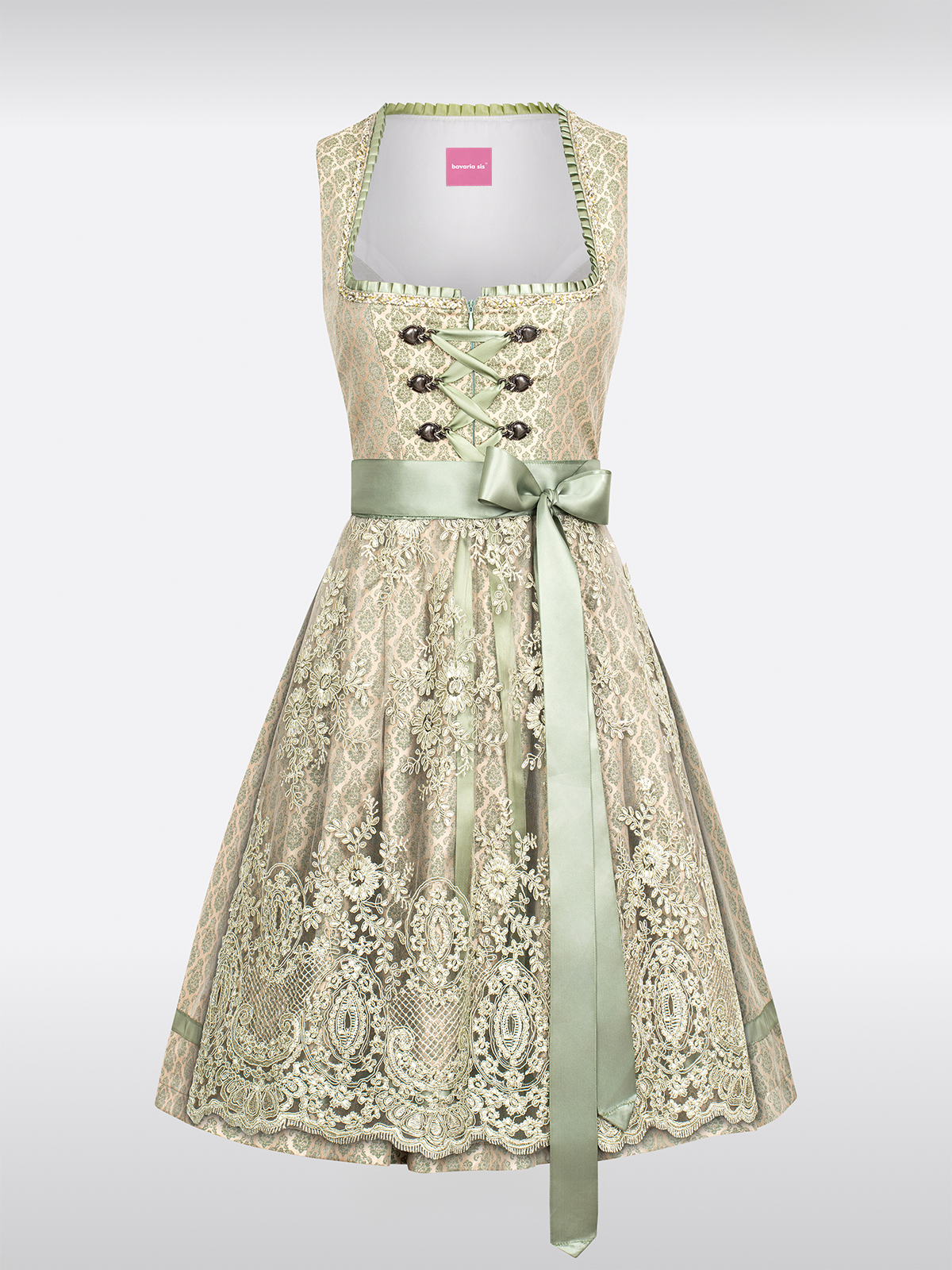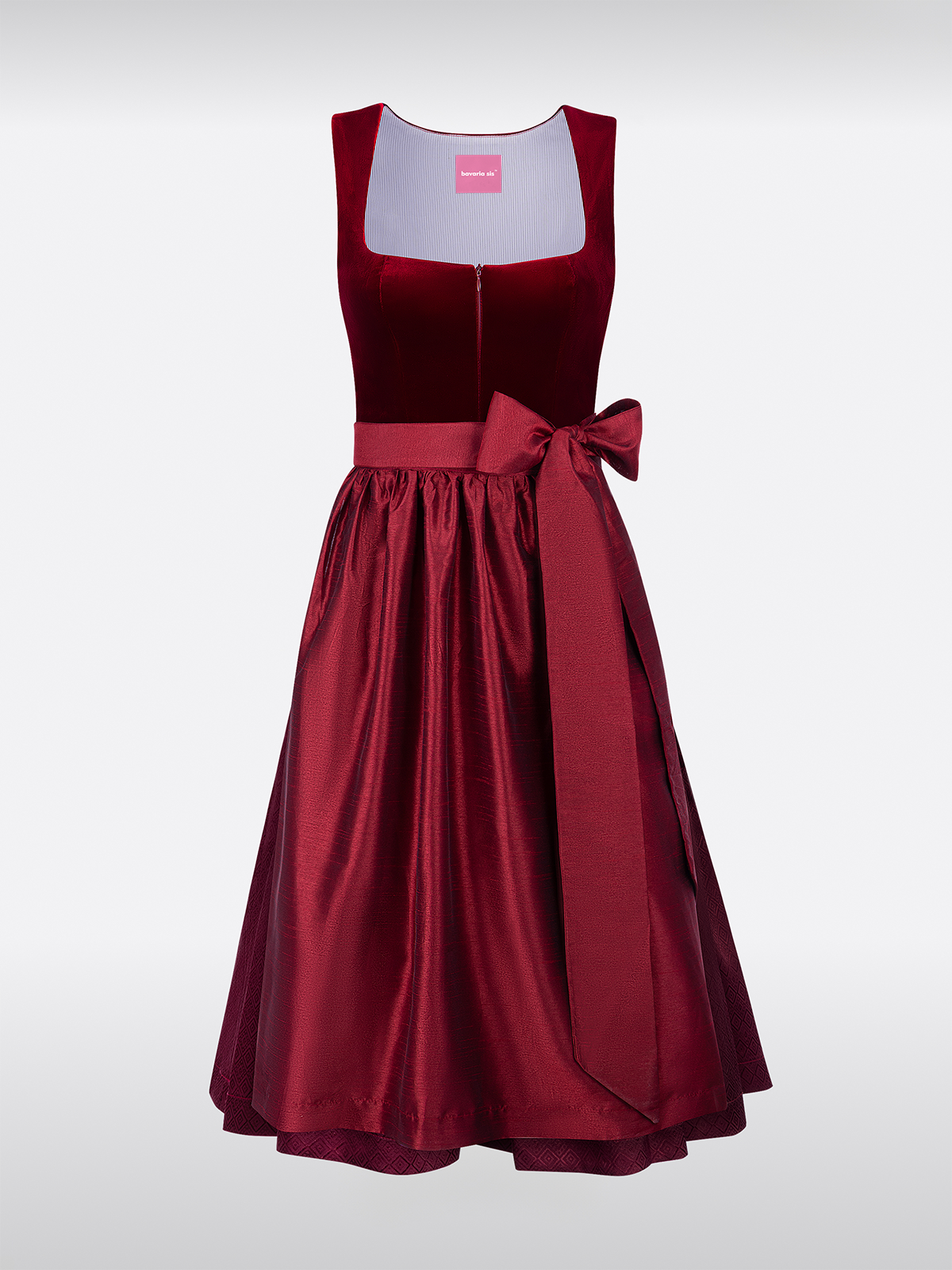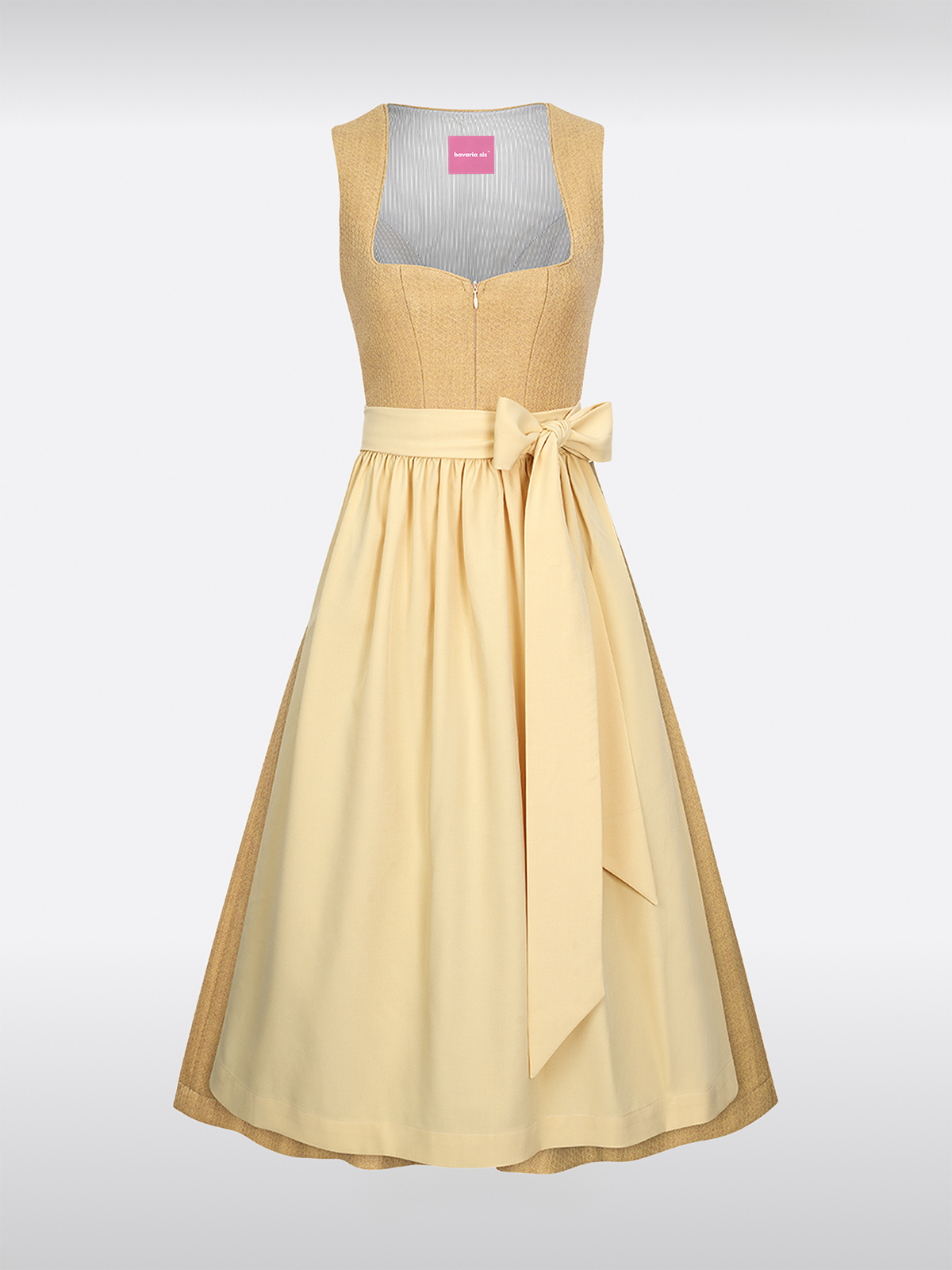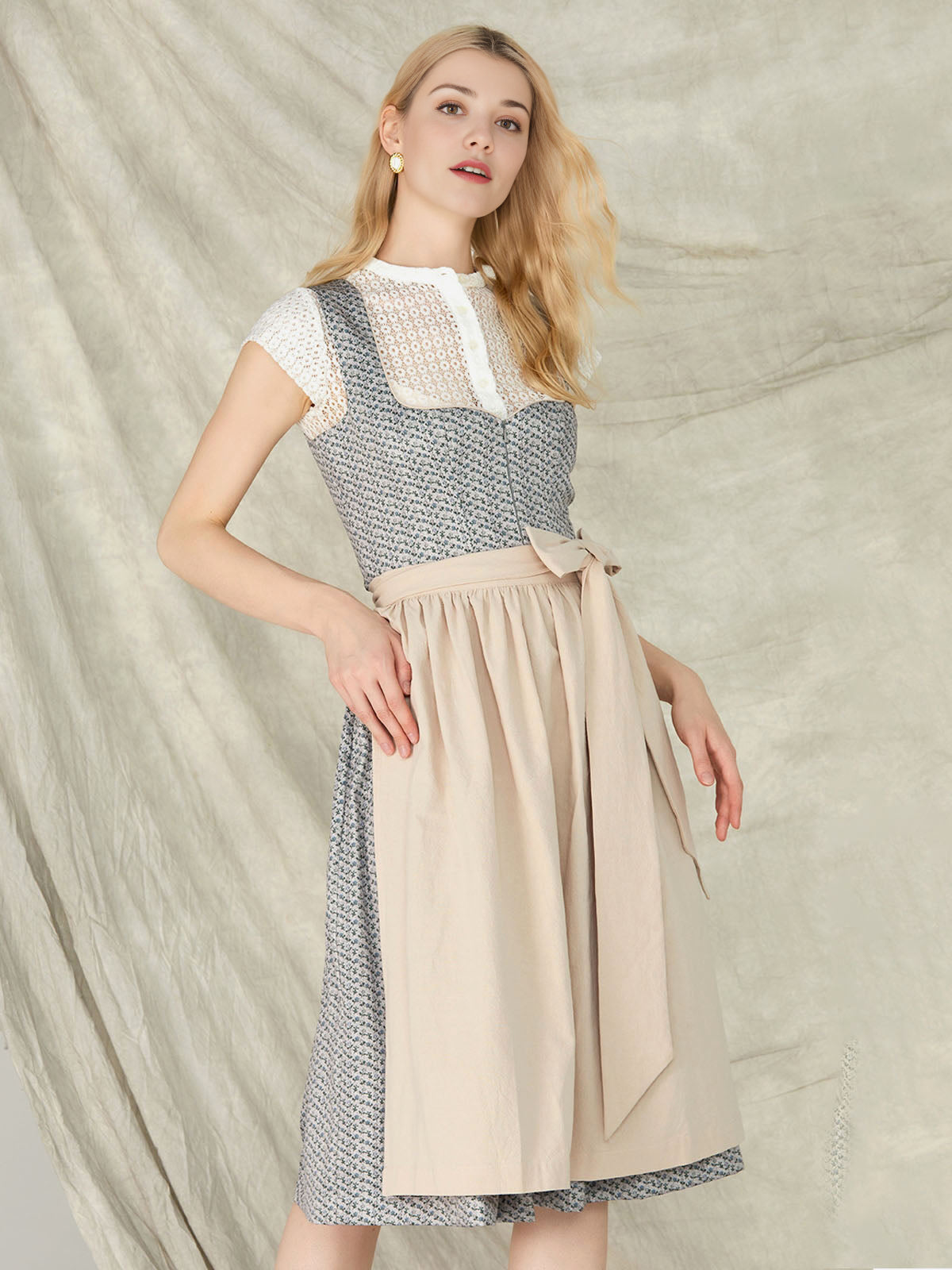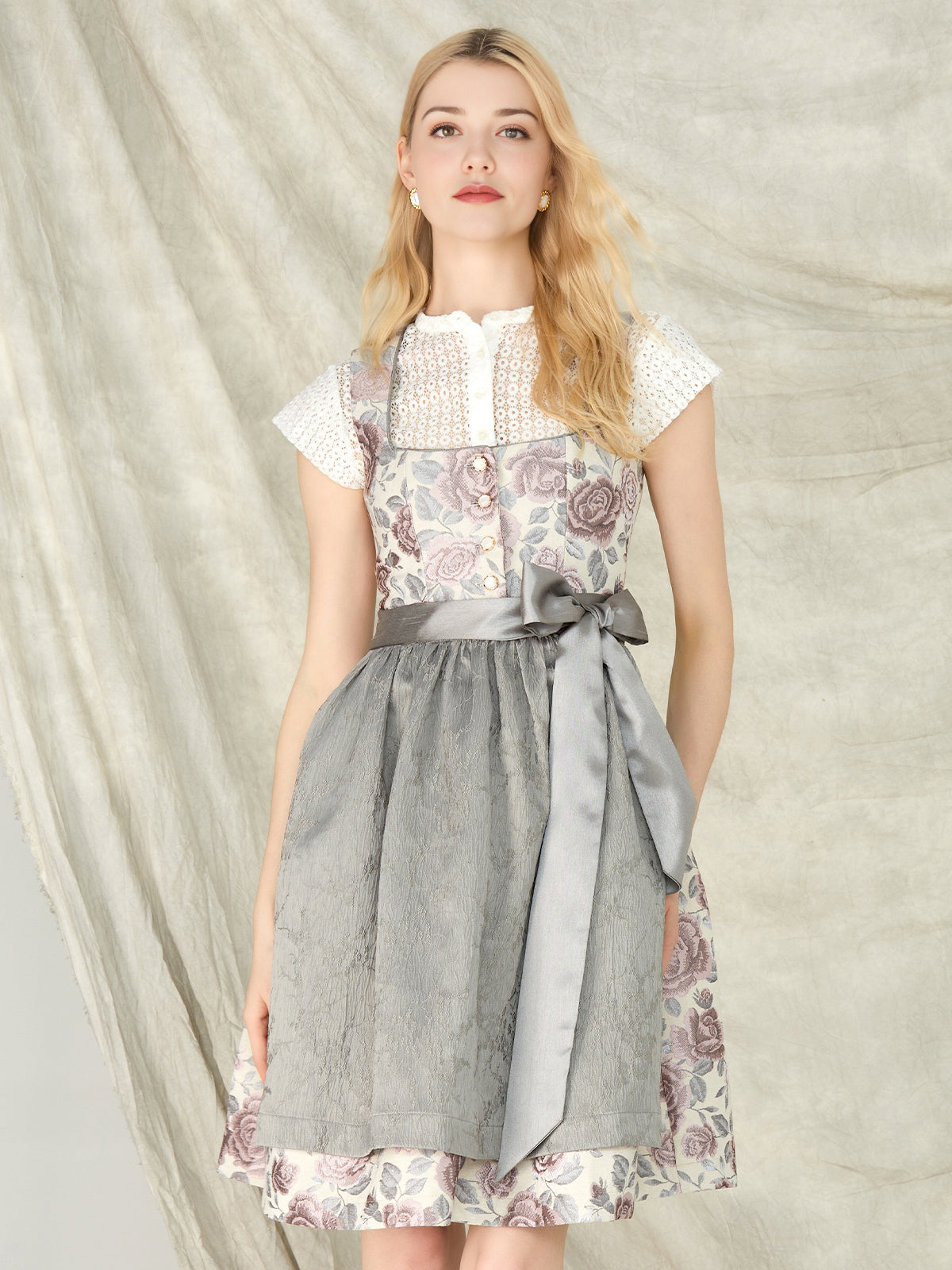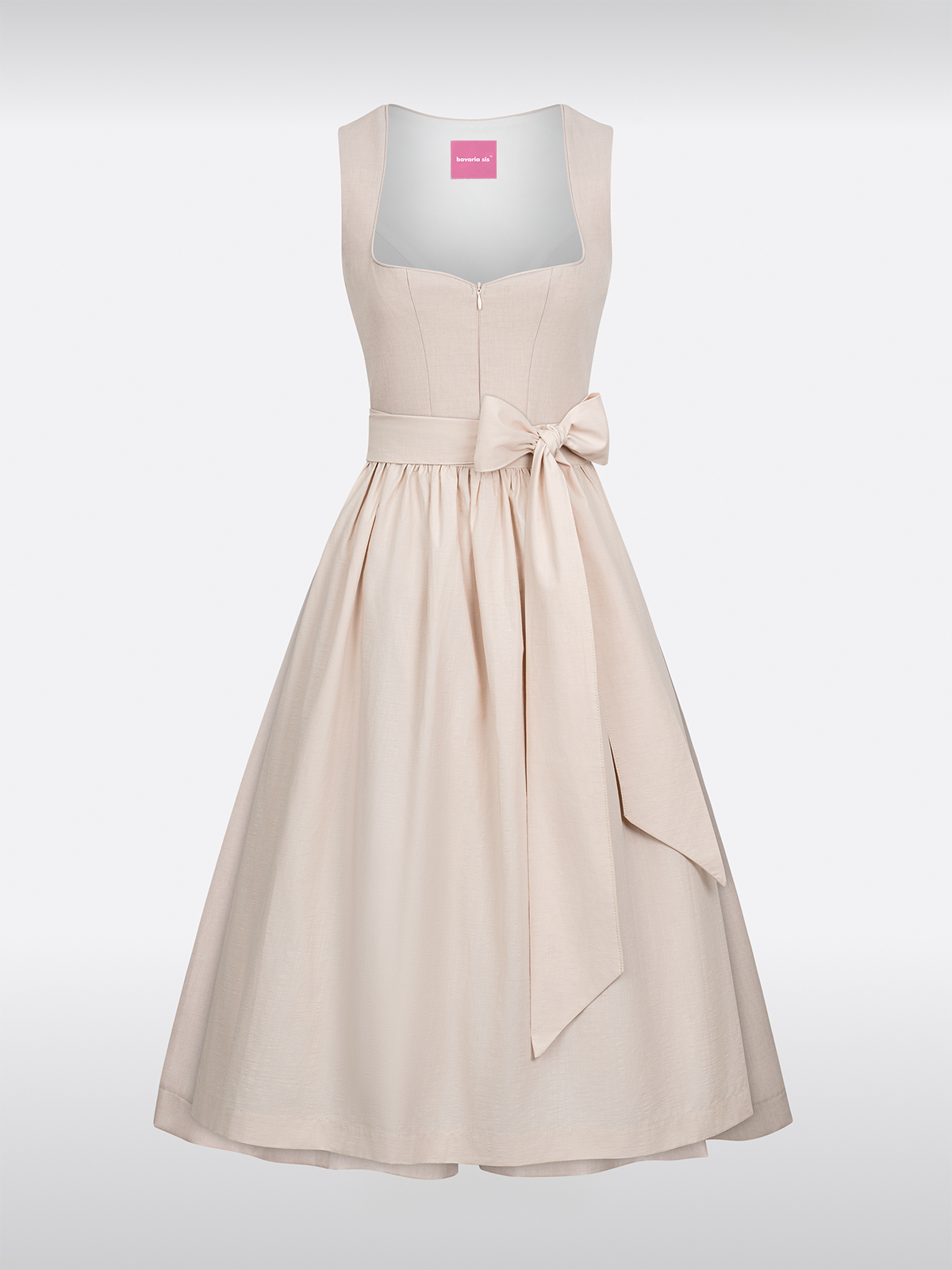The dirndl is a symbol of cultural identity in many regions and has evolved over the years to both preserve tradition and meet the needs of today's women.
Dirndl with front zipper - Practical innovation
The
Dirndl with front zipper provides a practical solution for dressing and undressing. Many women appreciate this modern touch, especially when they want to get dressed without assistance or when they need to change quickly.
"I was always afraid of damaging my dirndl when putting it on. With the zipper in the front, it's so much easier, and I can dress myself," says Lisa. However, there are also those who argue that a dirndl with a zipper no longer reflects pure tradition.
"I think a real dirndl is without this modern flair. It loses some of its authenticity," says Hanna. These opposing opinions demonstrate the tension between tradition and innovation and make readers consider where the line between the two lies.
Suede Dirndl - Natural robustness and style
The suede dirndl has a unique appeal. The suede gives the dirndl a natural robustness and a rustic flair. It's perfect for women seeking a connection to nature and a rugged style.
"I discovered my suede dirndl on a trip to the mountains. It fits the landscape so well, and I feel like a part of nature when I wear it," Klara explains. However, you also have to be careful when caring for a suede dirndl.
“I once had my
Suede Dirndl left it in the sun too long, and it changed a bit. Since then, I've known that I need to protect it from too much sun exposure," she reports. This shows that proper care is also important for this special dirndl and leaves a little bit of tension, as attitudes toward care can vary.
Black velvet dirndl - elegance and luxury
The black velvet dirndl exudes an aura of elegance and luxury. The velvety material feels comfortable, and the black color gives the dirndl a classic and stylish touch.
"I chose my black velvet dirndl for an elegant event, and everyone admired me. It was like a dream to show up in that dirndl," says Julia. But even here, there are challenges.
"I have trouble cleaning the black velvet dirndl. It requires special cleaning methods, and I have to be careful not to damage it," she complains. These cleaning difficulties increase the suspense and make readers wonder whether the dirndl's beauty is worth the effort.
Dirndl and its cultural significance - An emotional connection
All these dirndl styles have important cultural significance. They connect women to their homeland and their history.
"When I put on my dirndl, I feel like a keeper of tradition. I can imagine the women before me who lived in similar dirndls and felt the same emotions," says Sophie. But in the modern world, one must strive to preserve and pass on this cultural identity.
Dirndl in the fashion world - traditional roots and modern interpretations
The dirndl has become a popular motif in the fashion world.Designers experiment with new cuts, fabrics and combinations while maintaining traditional elements.
"I recently saw a fashion collection that featured unique interpretations of the dirndl. It was fascinating how tradition was fused with modernity without losing the soul of the dirndl," says Sarah. But here, too, there's debate about whether the modern interpretation changes the original meaning of the dirndl or whether it revitalizes it.
Dirndl and the individual expression - Everyone has their own touch
Each dirndl can be customized. From the type of bow to the choice of blouse, you can express your personal style.
"I have my own way of tying the bow on my dirndl. It's truly unique and fits my style," says Emma. This demonstrates that the dirndl is not just a traditional garment, but also a medium for individual self-expression.
Dirndl and the quality of production – craftsmanship or industry?
Dirndl dresses can be made in a variety of ways. Handmade dirndl dresses often offer higher quality and individual details, but they are also more expensive and take longer to produce. Industrially manufactured dirndl dresses, on the other hand, are more affordable and readily available.
"I once bought a handmade dirndl, and the attention to detail was incredible. But I've also had good experiences with industrially manufactured dirndl dresses. You just have to know what you prefer," says Laura. This presents the problem of choosing between quality and price, as well as between traditional craftsmanship and modern industrial production.
Dirndl and seasonal adaptation - Always suitable for the season
The dirndl can also be adapted to the season. In summer, lighter fabrics and shorter skirts are available, while in winter, longer skirts and warmer materials are used.
"In summer, I wear my airy cotton dirndl, and in winter, I wear a warm wool dirndl. This way, I'm always comfortable and stylish at the same time," says Hannah. This demonstrates the versatility of the dirndl and its adaptability to different climatic conditions.
The future of the Dirndl - preserving and developing tradition
What will become of the dirndl in the future? Will it continue to play an important role in our culture? The answer likely lies in the balance between tradition and innovation. We must preserve the traditional values and cultural significance of the dirndl while simultaneously allowing room for creative interpretation and modern adaptations.
We should strive to ensure that the dirndl is not only remembered as a nostalgic garment, but also remains alive in the present and in the future. Whether it is the dirndl with a zipper in the front, the suede dirndl or the
black velvet dirndl Each type has its own history and meaning. Let us continue and develop this tradition so that it remains a source of joy and cultural identity for future generations.

